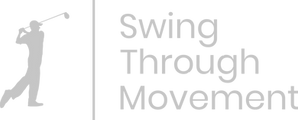Stability not Rigidity:
‘Stability does not imply rigidity. In most cases, joints that are involved in a stability function are not completely rigid or motionless. Instead, there is usually some small amount of motion required for optimum function.’ T Hargrove.
Within the health, fitness and sports industries one of the most frequently used terms is stability.
But what is stability?
Why do we need it?
How is it achieved?
Stability within the human system is defined as the ability of the body to maintain postural equilibrium and support joints during movement. Therefore to achieve and maintain equilibrium and support we must have movement, and its control, to be available within the joints.
Whereas rigidity is described as stiff, unyielding, firmly fixed or set. If there is rigidity within the bodies movement systems it will restrict, limit and prevent motion. As has been explained this is what we want to avoid in any corrective training for swing optimisation. We want to gain stability and eliminate rigidity.
This begins with the corrected alignment at the rest/start position and its maintenance throughout the movement or function. Each individual has their own unique skeletal architecture and therefore their own bespoke joint alignments that will vary. However this does not stop us from attempting to achieve the ideal available alignment and postures through physical action in order for us to maintain the joint health but also to promote and receive the best outcomes.
Whether considering alignment changes or the action or movement itself the focus is on the soft tissues that produce and maintain them. In order for each player to accomplish stability through movement there must be effective co-activation and balance of the muscular and soft tissue structures to maintain the joint in its central optimal position.
This way the soft tissues can both provide movement and function but also transfer the forces through the structures as safely and effectively as possible, whilst providing support. When this is the case the force, power, energy flows through the joint efficiently without damaging the joint.
The golf swing is an accurate example of the soft tissue requirements necessary to generate, accelerate, control and decelerate combined 3 dimensional movement throughout the whole system. However stability is vital throughout every part of every stage of every movement if risk of injuries are to be minimised and results optimised.
However we must also look beyond the stability at joints in motion and give detailed consideration to the stability required away from these immediate sites of movement. Through the wider network of interconnected soft tissue interaction, successful stability in one area should always be reliant upon supportive stability being produced in other regions.
Without this supportive stability the individual is unable to prevent unwanted and uncontrolled movements elsewhere in the full movement system. This can be through excessive tightness (rigidity), weakness or reduced motor control or strength. We know that repeated and demanding loads on an unstable base is a risk factor for injury but it also prohibits performance. Energy that is generated but not controlled correctly, as it transfers through the full body motion, will leak from these areas. This means forces intended for the transfer from club head to ball get lost and wasted.
Control is the most important aspect of stabilisation through movement. The competency of the soft tissues to co-activate and reciprocate within force loading, transference and tolerance is crucial in generating and using the energy within the swing. Acquiring this practical stability is related more to soft tissue recruitment patterns and coordinated timing in activation, as well as muscle endurance, than it is to the strength achieved by nonspecific exercise.
For example, during movement of the extremities, optimal isometric contraction of the trunk muscles is needed to appropriately stabilise and control the limb movements. Within most daily activities, the primary role of the abdominal muscles is to provide isometric support and control the degree of rotation of the trunk. This becomes more influential as the kinetic forces and loads are combined and increased during the golf swing.
‘You can’t fire a cannon from a canoe.’ C Polequin.
